11 Old Eyeglass Frames Collectors Will Pay Premiums For
Eyeglass frames have evolved over the years, and some vintage styles are now in high demand. Collectors are increasingly drawn to old frames for their unique designs and historical value. Whether made of rare materials or crafted by renowned brands, certain frames have become sought-after treasures. If you enjoy vintage eyewear or are simply curious about what makes these frames valuable, you may be surprised by the prices they can command. Let’s take a closer look at the frames that are turning heads in the world of collectors.
This post may contain affiliate links, which helps keep this content free. Please read our disclosure for more info.
1930s Gold-Filled Wire Rim Frames
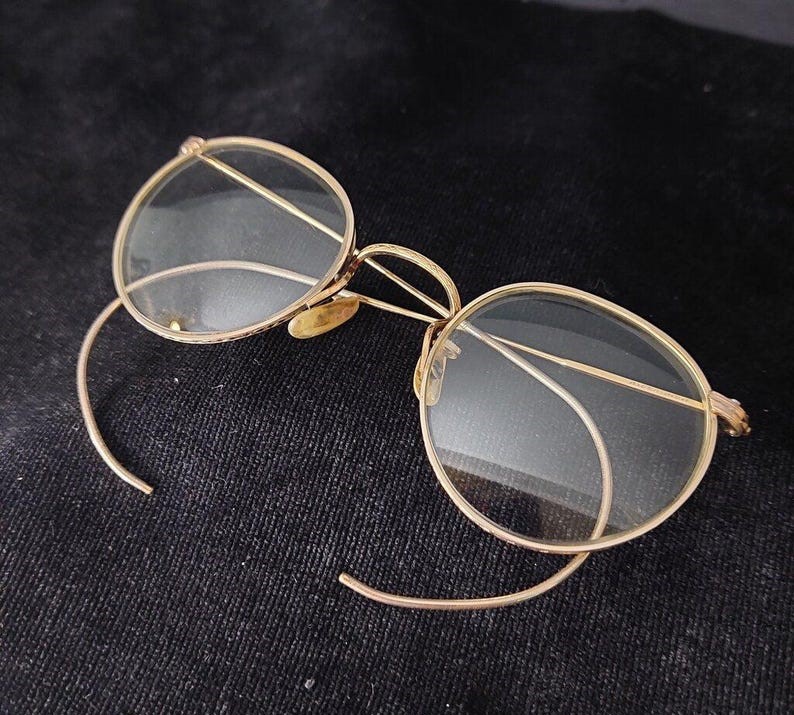
These frames were produced in the 1930s and often used gold-filled metal for the rims and bridges. The gold-filled construction gives them a richer look and greater durability compared with standard metals and helps their appeal to collectors. In today’s market, fine examples might sell in the region of around US $150-$300, depending on condition, maker, and case. What makes them attractive is the combination of age, metal quality, original case and intact lenses or bridge. If you find one marked 12K GF or similar and in very good condition, you may have a serious collectible.
Collectors will pay more for examples with minimal wear, original leather or hard cases, and clear markings. Frames with bent arms, missing nose-pads, or heavy corrosion typically bring much less. The provenance-such as being made by a known optical house or with Art Deco styling-is also a plus. Some listings show dozens of 1930s gold-filled frames selling in the US $50-$150 range if condition is average. For best value you’ll want crisp hinges, clear inscriptions, and minimal repair.
1950s Cat-Eye Acetate Frames
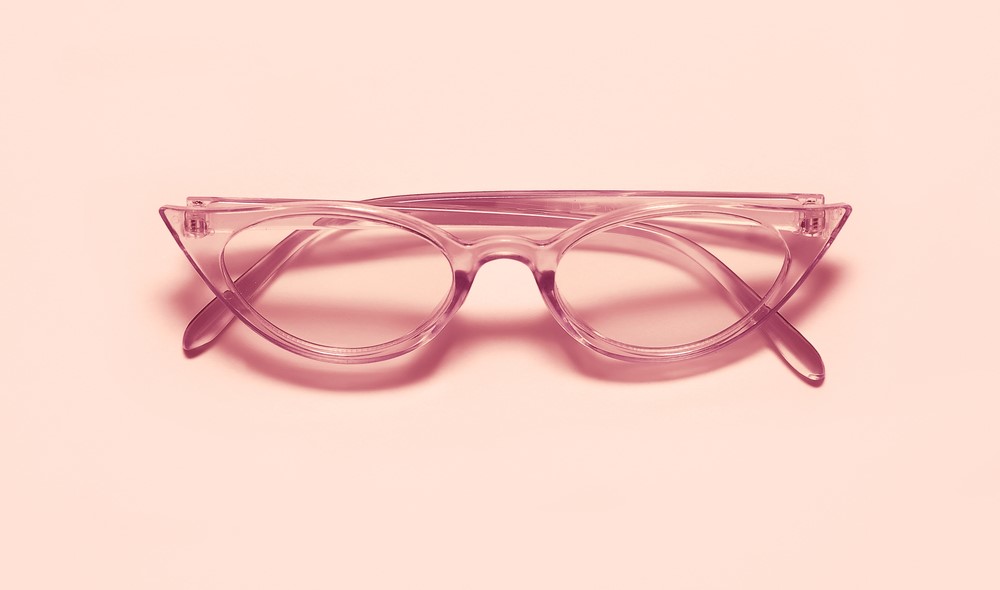
Manufactured during the 1950s, these women’s cat-eye frames often used thick acetates in bold shapes and colors. The material usually is cellulose acetate, often in tortoise, black or two-tone design, with upswept corners that characterise the style. In the current marketplace, good examples might go for US $100-$250, with rarer brands or new-old-stock examples possibly higher. The appeal lies in the bold design of the era, original detailing (like rhinestones or metal brows) and intact acetate with little crazing. If you locate one in original condition with the case and unmarked arms, you likely have a collector interest piece.
On the flip side, many 1950s acetates have faded color, cracked plastic or missing embellishments, which reduces value. Brands matter-if the frame is by a known maker such as Tura, Artcraft or American Optical, the value improves. Also original sizing stickers or case tags help. For a user-worn pair without case the value may drop under US $75. Overall, the combination of era, material, styling and condition drives the higher end.
Pre-War Horn or Tortoiseshell Rim Frames (1920s-1930s)

These were produced between the 1920s and 1930s and often made with genuine horn, tortoiseshell or early celluloid material for the rims. The use of horn or tortoiseshell or early plastics gives them a distinct aged look and rarity since many have not survived intact. Market values in good condition might range around US $200-$400, especially for rarities and highly original examples. Their value stems from being early examples of eyewear fashion, fine materials, and often exquisite bridge and temple detailing from the Art Deco era. If you find one with matching original leather case and minimal wear, it can interest serious collectors.
Because horn and tortoiseshell were gradually phased out and many frames have been lost or damaged, good ones are rare. Check for splits in the horns, shrinkage on the celluloid or brittle arms, all of which hurt value. Original engraving or maker stamp adds to the appeal. Lower-quality or heavily worn versions may go for under US $100. In short, this category is valued for age, material rarity and condition.
1960s Metal Browline Frames

The browline style rose in popularity during the 1950s and further into the 1960s; these frames often combine a thicker acetate or plastic brow bar with metal lower rims and temples. Material wise you’ll often find acetate brow bars and nickel or gold-tone metal lower rims and arms. In today’s collector market, nice examples may fetch US $80-$200, especially if by a recognised maker and with original temple branding. What makes them collectible is the distinctive style that defined an era, plus the mix of materials and surviving condition of the brow bar and rivets. If you locate an early 1960s pair with original factory acetate brow and clean metal parts, it’s a frame worth noting.
That said many browline frames have cracked brow bars, missing metal rivets or pitted metal arms, which reduce value significantly. Known brands like Shuron Ronsir, Ray-Ban or American Optical add to the desirability. A heavily worn or unbranded pair may sell for much less, maybe US $30-$60. Preserving the original brow bar and avoiding bending or stretching is key for higher marketplace interest.
1970s Oversized Acetate Frames
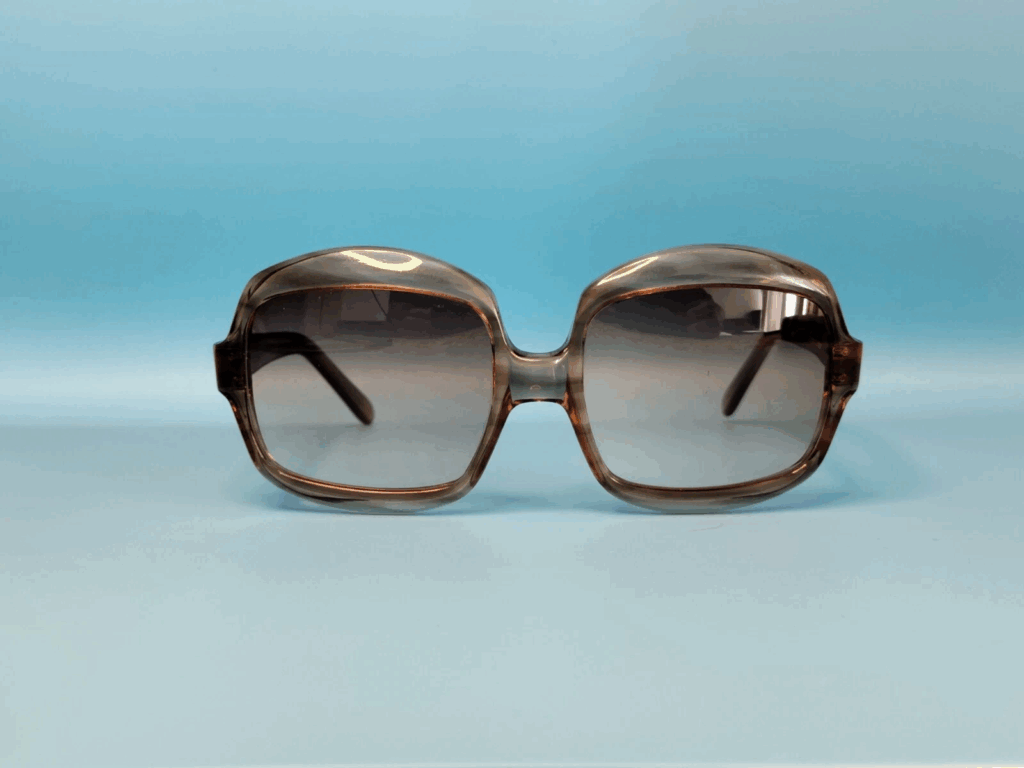
In the 1970s, oversized acetate frames with broad temples and bold shapes were produced often in vibrant colors or tortoise. Material is typically thick cellulose acetate, sometimes with metal details or embellishments. In good shape, these might command around US $70-$150, and rare designer versions can go higher. The appeal arises from their statement size, unusual colors, and vintage styling that’s returned to fashion. If you find one marked with a designer label, branded case and minimal wear it could attract a premium.
Still, many 1970s frames show heavy surface wear, color fading, or warped temples, reducing interest. Limited runs or dead-stock frames (never worn) are especially prized. For a plain, generic 1970s frame in decent shape value might hover around US $40-$60. Check for intact screws, original nose-pads, and no major discoloration to find the stronger pieces.
Early 1980s Designer Metal Frames
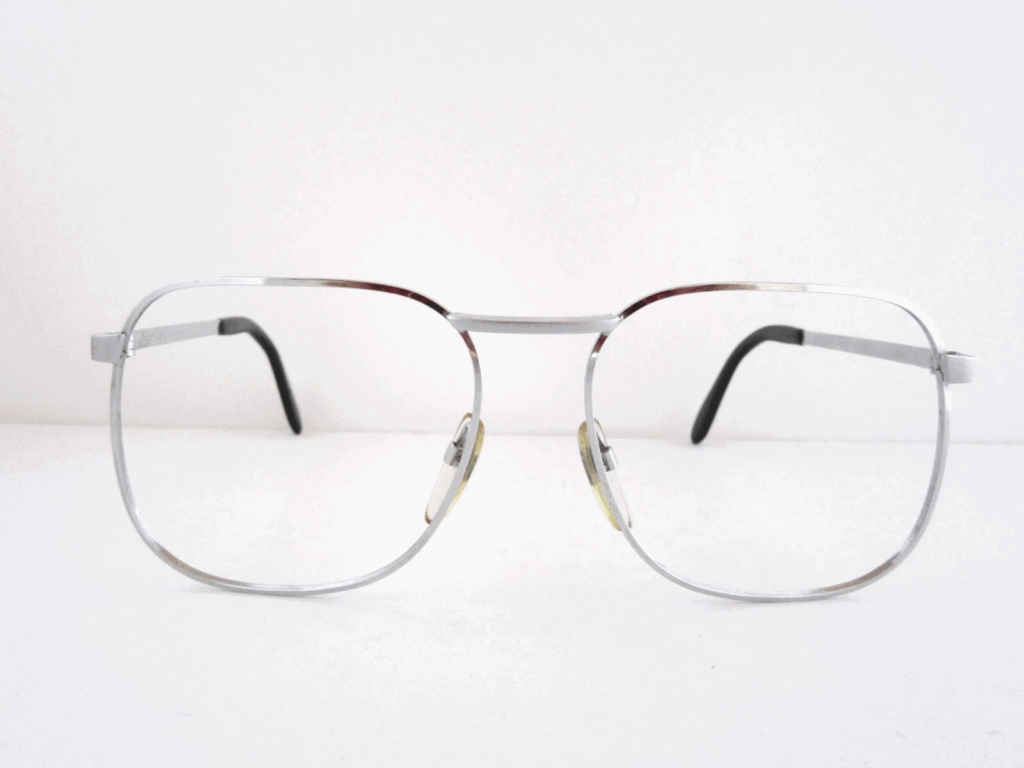
Frames from the early 1980s by designer brands often used thin metal alloys such as titanium or stainless steel with a light finish and subtle design. Materials might include light-weight metals and often designer branding on temples. Estimated values today might range around US $80-$200 depending on brand and condition. The value hinges on being early designer frames with branding, high quality metal, and the fact that many decorative metal frames from that era have been discarded or damaged. If you locate one with the original case, intact hinges, minimal lens scratching and designer logo you may have a noteworthy piece.
On the other hand, generic metal frames of that era without strong branding or in poor state may fetch low value. Scratched or bent metal, missing temple tips or faded brand stamping reduce demand. Branded names such as Persol or other optic house limited editions draw more attention. For ones that have been repaired or heavily used the market may drop to US $30-$50. Attention to condition and label makes a different in value.
Vintage Designer Frames from the 1970s-1980s (e.g. Cazal)
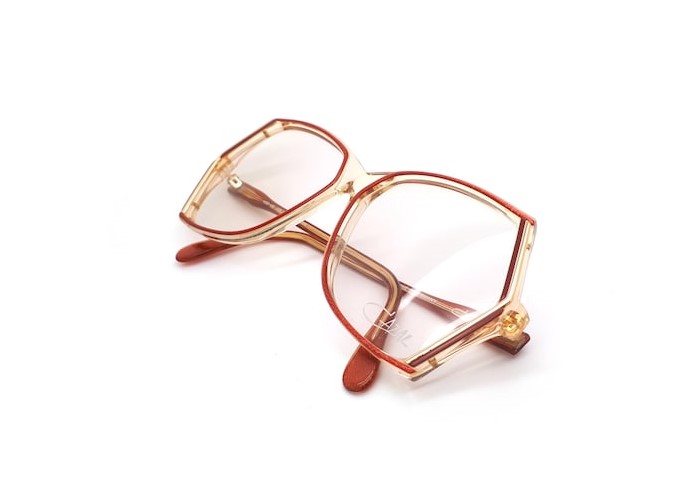
Frames originally produced during the late 1970s into the 1980s by high-end or designer houses such as Cazal are made of high-quality metals or mixed metal or acrylic, often with bold ornamental temples. Materials might include plated gold-tone metal, crystal embellishments or thick acrylic inlays. Some of these can sell in the region of US $250-$600 when in excellent condition, especially if rare model or limited run. Their appeal comes from design notoriety (for example Cazal frames were icons in hip-hop culture), materials and sometimes limited quantity. If you locate one marked with the correct model number, original temple tips and minimal surface wear you are in a strong position.
However many such designer frames have been heavily worn, lost original tips or have scratched lenses, which lowers value. Verification of model number, original packaging and condition play a major role. For common or worn pieces the value may be down to US $50-$100. For the rare models in near-mint condition the top end value can be much higher depending on buyer interest.
1990s Vintage Acetate Wayfarer Style Prescription Frames
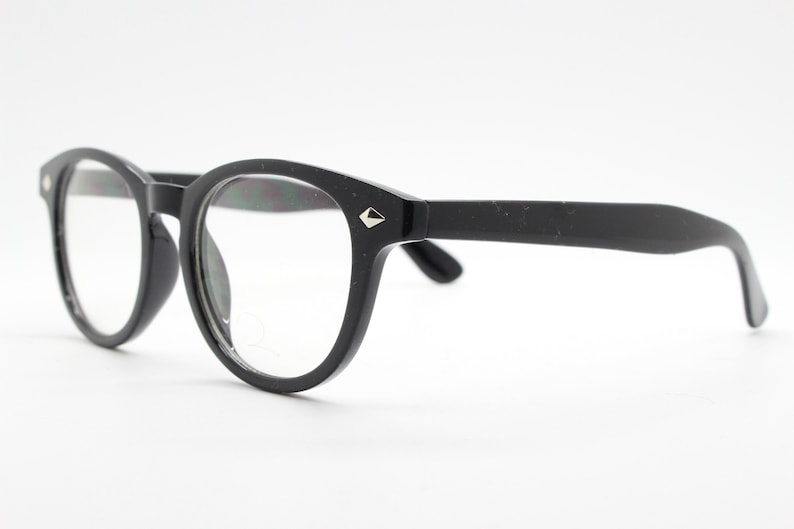
These frames echo the style of the iconic design originally introduced in the 1950s but carry 1990s vintage appeal using cellulose acetate in black or tortoise formats. Material is primarily acetate, sometimes with metal rivets or brand detailing. In today’s vintage market a well-preserved pair might sell for US $60-$140, especially if they are dead-stock or unused. The collectibility comes from them being part of the revival era of 1990s vintage eyewear, their styling and condition. If you find a pair labelled New Old Stock from the 1990s with original case, condition may push it toward the higher end.
Still, because they are more recent, value is generally lower than earlier decades. Worn pairs, scratched lenses or missing tips might bring only US $20-$40. Strong colour sets or rare colourways can command higher interest. For best results you’ll look for un-worn condition, intact factory stickers, original case and tags.
Early 20th Century Pince-Nez or Wire Spectacles (Circa 1900-1920)
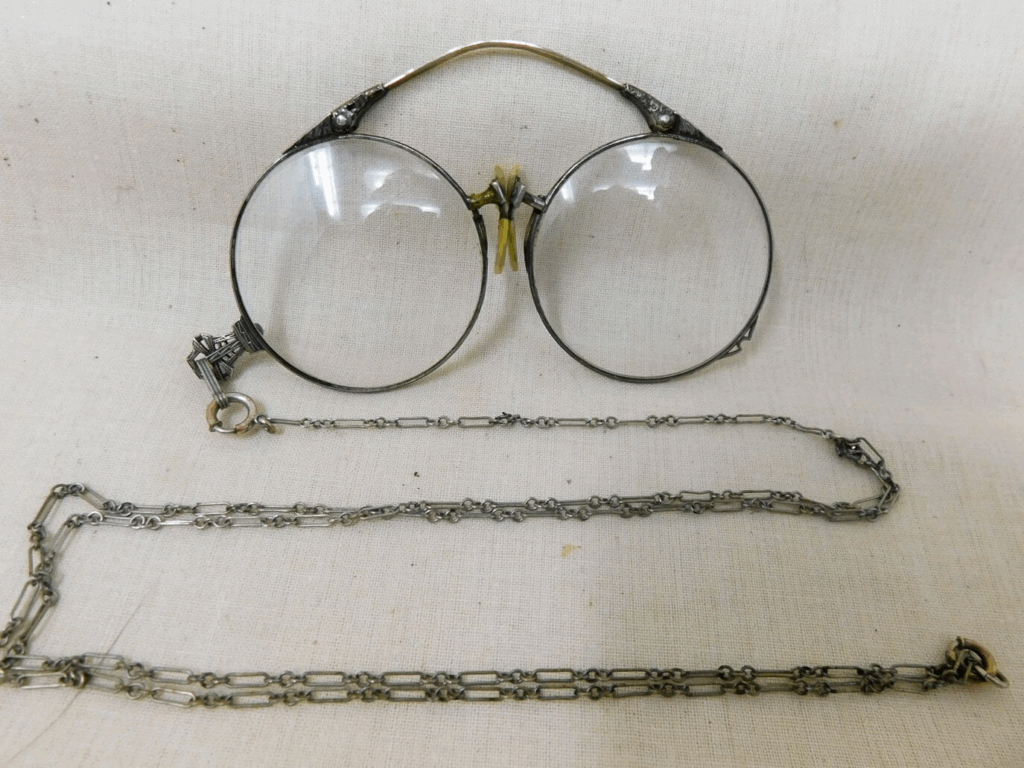
These frames date back to around 1900 to 1920 and often use thin gold-filled or silver-plated wire rims, sometimes without full temples. The materials typically include gold-filled wire, a steel or silver plate, and early lens mounting techniques. In the collector market today, clean examples with cases might bring US $100-$250, sometimes more if very rare or marked. Their appeal lies in their age (pre-WWI era), historical design, rarity and fine metal work. If you have an example with original bridge and temple tips, minimal wear, and a matching case, you could have a very interesting piece.
Because so many were lost, bent, or reused over the decades, surviving pieces in good shape are rare. Bent frames, missing nose-pads, or modern lens replacements reduce value significantly. Documentation or known maker adds value. For fragments or poor condition examples value may drop to under US $50. Such frames are most valued by collectors of early eyewear history.
1950s Tortoiseshell Cat-Eye Frames
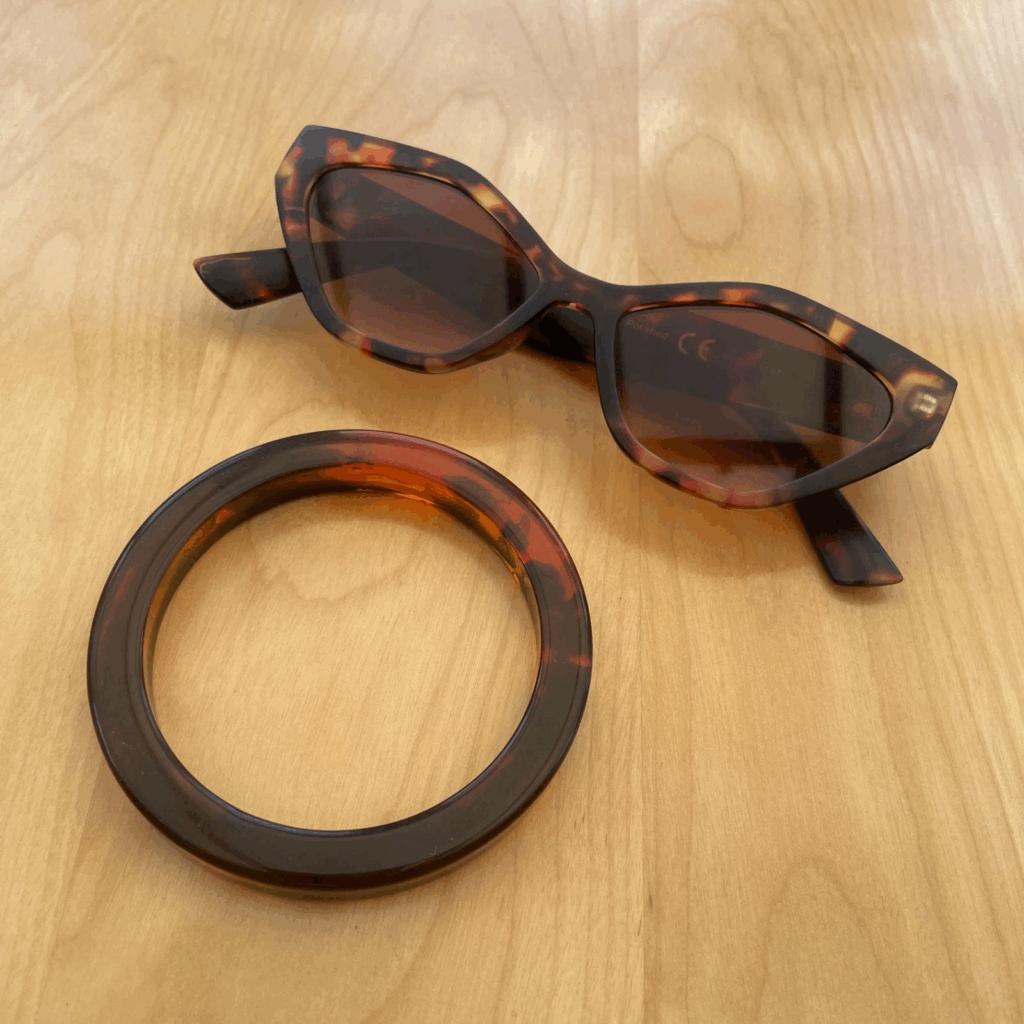
Produced in the 1950s, tortoiseshell cat-eye frames were all the rage for their bold and elegant design. These frames, typically made from acetate, were crafted to feature upswept edges with intricate detailing, often with embellishments like rhinestones on the brow. Depending on condition and rarity, a pair can fetch anywhere from US $200-$500 at auction, especially if it includes the original case. The appeal of these frames lies in their vintage style, making them highly desirable among collectors seeking mid-century accessories. Cat-eye frames are iconic in vintage eyewear, and their combination of form and function adds to their value.
Condition plays a significant role in the frame’s market value. If the frames show minimal wear, with clear acetate and no major fading or cracking, their value is higher. Collectors particularly seek out frames that have the original components, including nose pads and temples, intact. Some brands that produced these styles, like Artcraft, add more value to these pieces. If you come across a pristine pair, expect it to command a premium price.
1950s Alcoa Aluminum Frames

Produced in the 1950s, Alcoa aluminum frames represented a breakthrough in eyewear manufacturing, combining lightweight metal with durability. These frames were produced by the Aluminum Company of America and were known for their sleek, modern design. Today, these frames are valued around US $150-$300 depending on condition, with well-preserved examples fetching even more. The lightweight and innovative use of aluminum made these frames a desirable alternative to heavier metal frames of the time. Their market value is driven by both the unique material and the retro appeal of mid-century designs.
Aluminum frames were often more prone to damage or wear, and finding a pair in good condition can be a challenge. Most collectors focus on finding complete sets with the original markings intact. Pairs with slight wear on the aluminum can still be valuable, but heavily scratched or bent frames will have a much lower value. A complete set with original case and lenses will typically bring higher bids. The combination of design, material rarity, and age makes Alcoa aluminum frames a sought-after item in the collector’s market.
This article originally appeared on Avocadu.
